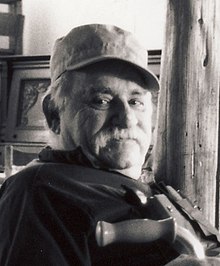Social anarchism
Social anarchism is opposed to all forms of hierarchical power structures, and oppression, including (but not limited to) the State and capitalism.
[8] As an anti-capitalist ideology, social anarchism is opposed to the dominant expressions of capitalism, including the expansion of transnational corporations through globalization.
[15] While social anarchism has rejected the statism of Orthodox Marxism, it has also drawn from Marxist critiques of capitalism, particularly Marx's theory of alienation.
[18] To social anarchists, the state is a type of coercive hierarchy designed to enforce private property and to limit individual self-development.
[22] Social anarchists oppose the use of a state structure to achieve their goals of a stateless and classless society,[23] as they consider statism to be an inherently corrupting influence.
[27] Social anarchism prefigures itself through participatory and consensus decision-making, which are capable of generating the diversification of political values, tactics and identities.
[1] Social anarchism upholds direct action as a means for people to themselves resist oppression,[29] without subordinating their own agency to democratic representatives or revolutionary vanguards.
[38] This was later supplanted by Mikhail Bakunin's collectivist anarchism, which advocated for the collective ownership of all property, but retained a form of individual compensation.
[39] This finally led to the development of anarcho-communism by Peter Kropotkin, who considered that resources should be freely distributed "from each according to their ability, to each according to their needs", without money or wages.
[40] Social anarchists also adopted the strategy of syndicalism, which saw trade unions as the basis for a new socialist economy,[41] with anarcho-syndicalism growing to its greatest influence during the Spanish Revolution of 1936.
[49] Social anarchist strategies of direct action and spontaneity also formed the foundation of the black bloc tactic, which has become a staple of contemporary anarchism.
[60] Some social anarchists, such as Emma Goldman and Herbert Read, were even directly inspired by the individualist philosophy of Max Stirner.
[72] In turn, modern anti-capitalist individualists like Kevin Carson have drawn inspiration from social anarchism, while retaining their pro-market views.
